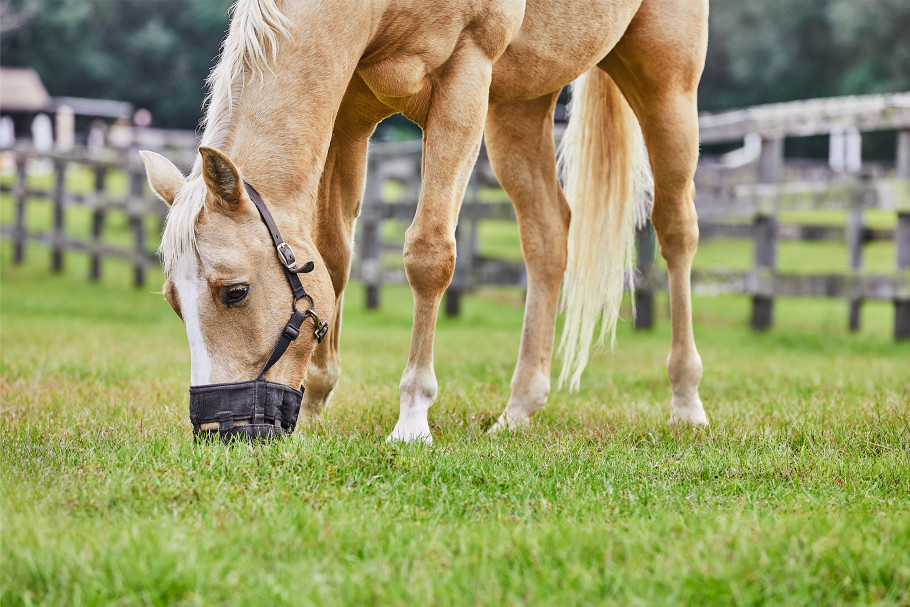Transitioning Your Horse to Grass Pasture Turnout
Updated April 2, 2024 | By: Dr. Lydia Gray

"I just recently purchased a 15-year-old gelding. He has only been on hay feed, not grass pasture. We’ve had him for almost a week now and have slowly been putting him in the grass pasture. We started at 40 minutes, then that night his poop was a bit wet. Then went to 15-20 minutes per day. What would be the appropriate time and for how long before he can go 24/7 on pasture?"
– question via HorseChannel.com
Thumbs up to you for knowing that introducing a horse to pasture – especially one who’s stressed from having his whole life suddenly uprooted – must be done gradually over time and with close observation.
I’ve seen a variety of “pasture introduction” schedules over the years, from starting at 10 minutes per day and increasing no more than 10 minutes every day, to starting at an hour and increasing in hour increments every day. To some degree it depends on the individual horse and the individual pasture, as some horse’s digestive systems are hardier than others (just like some people’s) and some pastures are riskier than others. And we won’t even get into the whole time-of-year, time-of-day, and species-of-grass discussions!
What you’re doing already is great – paying close attention to your horse and to the quality of his manure and backing him off from the green stuff when he clearly shows you the length of time was too much.
Most sources agree with your method, that is, starting at 15 minutes and adding another 15 minutes each day. Once you’re up to four hours (which should take about two weeks), then full turnout is probably okay, but it’s also okay to stick with the conservative approach and increase daily turnout to five hours, six hours, seven hours, and so on.
Tips, Tricks, and Things to Think About:
- Because spring pastures especially may need as slow an introduction, consider hand grazing your horse in an area of YOUR choosing (hint: this also avoids the issue of having to catch a loose horse that may not want to come back onto the dry lot after 15 or 30 minutes!)
- Continue to provide the same high quality hay the horse has been on during the transition period.
- Try not to change the type or amount of grain while introducing to pasture.
- For an extra layer of security, turn your horse out in a grazing muzzle to slow down his eating rate.
- Add a digestive support supplement with ingredients like prebiotics, probiotics, yeast, enzymes, and even a hind gut buffer to help his system (and all the microorganisms that live in it!) accommodate to the new feedstuff and maintain normal, healthy function.
Pasture maintenance, parasite control, and pasture analysis (to determine the sugar, starch, fructan, protein, energy, and mineral levels in your grass) are also relevant to this discussion, and I encourage you to read everything you can and speak to the extension folks in your area for their expert advice.